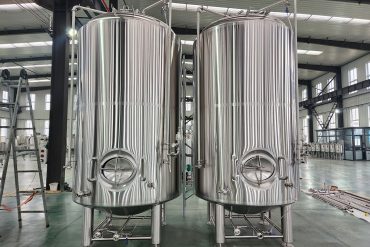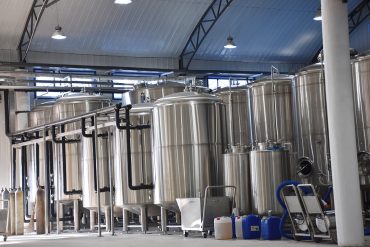Main Body Warranty
Auxiliary Warranty
Equipment Type
Bright Tank Products
Advantages of Bright Tank

Quality Assurance
Bright tanks play a crucial role in ensuring the quality and consistency of the final product. By providing a controlled environment for conditioning and carbonation, they help maintain the flavor profile, clarity, and stability of the beer.

Extended Shelf Life
Proper conditioning in bright tanks enhances the shelf life of beer by reducing unwanted flavors and contaminants. This allows breweries to deliver fresher, more flavorful beverages to consumers, enhancing brand reputation and customer satisfaction.

Efficient Production
Bright tanks streamline the production process by serving as the final stage before packaging. This minimizes handling and transfer, reducing the risk of contamination and preserving the integrity of the beer from brewery to glass.

Versatility
Bright tanks are not limited to beer production, they can also be utilized for other beverages such as cider, wine, and kombucha. This versatility makes them a valuable investment for breweries looking to expand their product offerings.

Customization Options
With ZYB Craft's custom-designed bright tanks, breweries have the flexibility to tailor tank specifications to their unique needs. From capacity and dimensions to additional features such as cooling jackets and pressure control systems, customization options ensure optimal performance and efficiency.

Cost-Effectiveness
Investing in quality bright tanks ultimately saves breweries money by improving product consistency, reducing waste, and minimizing the need for corrective measures during production.
Why Choose ZYB Craft
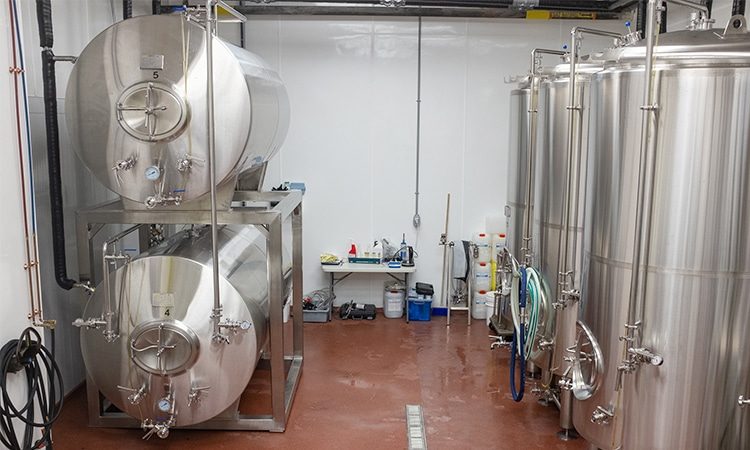
Customization Expertise
Exceptional Customer Service
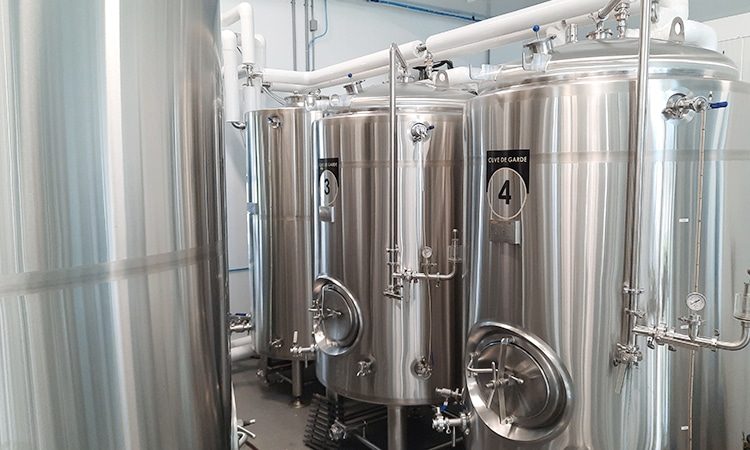
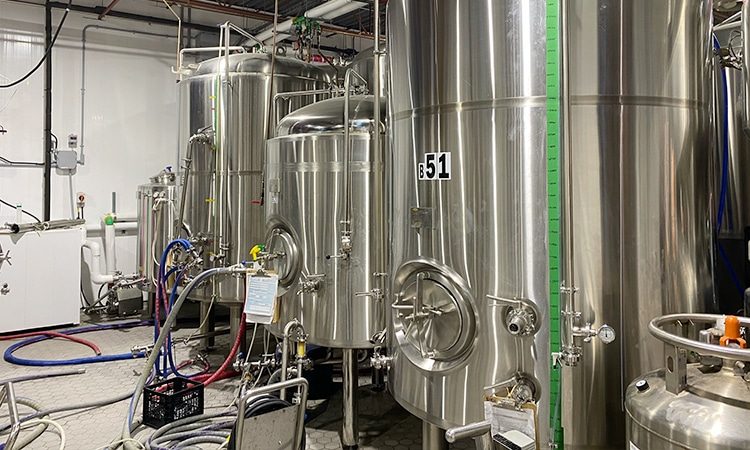
Innovation and Technology
Quality Craftsmanship
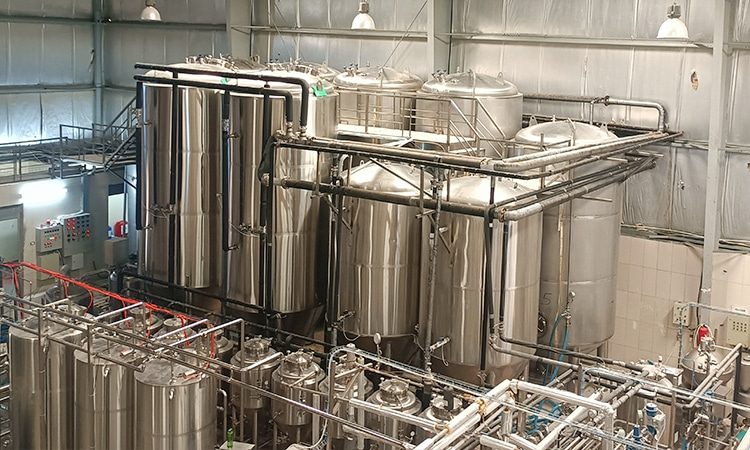
Frequently Asked Questions
What Is A Bright Tank?
What Does A Bright Tank Do?
- Clarification: One of the main purposes of a bright tank is to clarify the beer. After the beer has undergone primary fermentation in the fermenter, it still contains suspended solids, yeast, and other particles. Bright tanks allow these particles to settle to the bottom, resulting in a clearer and visually appealing beer. Clarified beer can be drained from the top of the bright tank, leaving behind sediment.
- Carbonation: Carbonation is an important aspect of beer that enhances its flavor, mouthfeel, and appearance. In bright tanks, brewers introduce carbon dioxide (CO2) to carbonate the beer. This can be achieved by either the natural carbonation of the beer with residual yeast activity or the direct addition of carbon dioxide under pressure. The degree of carbonation can be adjusted according to the desired style and character of the beer.
- Conditioning: Beer in bright tanks undergoes a period of conditioning during which it matures and develops its flavor. This conditioning phase harmonizes and mellows the beer, resulting in a more balanced flavor profile. In bright tanks, the beer is aged for a period of time at a controlled temperature, allowing it to achieve its desired flavor profile.
- Flavor And Aroma Adjustments: Bright tanks offer brewers the opportunity to make final adjustments to beer flavor and aroma. They may add dry hops or other flavorings to the tank to enhance the taste and aroma of the beer. This process allows brewers to experiment and fine-tune the character of the beer before packaging.
- Temperature Control: Bright tanks will often be equipped with cooling jackets, allowing the brewer to control and maintain the temperature of the beer during conditioning. Temperature regulation helps achieve optimal flavor development and maintain beer quality.
- Packing Preparation: After clarification, carbonation, and conditioning in sake tanks, the beer is ready for packaging. Bright tanks provide a controlled and hygienic environment for beer until it is transferred to kegs, bottles, or cans.
What Is The Difference Between Bright Tank And Fermentation Tank?
The main difference between bright tanks and fermentation tanks is the purpose and function of each in the brewing process of beer:
Purpose:
Fermentation Tanks: The main purpose of a fermentation tank is to facilitate the initial fermentation process. During fermentation, yeast consumes the sugar in the wort (unfermented beer) and converts it into alcohol and carbon dioxide. This stage is critical for the production of alcohol and the development of the main flavor of the beer.
Bright Tanks: The primary use of bright tanks is for secondary fermentation, conditioning, carbonation, and clarification of beer. This is the final stage before packaging, where the beer is matured, clarified, carbonated, and fine-tuned for flavor and appearance.
Fermentation Process:
Fermentation Tanks: In fermentation tanks, yeast is added to the wort and the fermentation process lasts for several days. Fermentation tanks are usually sealed to prevent carbon dioxide from escaping while keeping outside pollutants from entering.
Bright Tanks: In a bright tank, fermentation is not the main focus. Instead, it is used for secondary fermentation, where any remaining fermentative activity is mild and the beer matures and stabilizes further.
Storage Time:
Fermentation Tanks: Beer spends its main fermentation phase in fermentation tanks, which usually lasts from a few days to a few weeks, depending on the beer style and the yeast used.
Bright Tanks: After primary fermentation is completed in fermentation tanks, the beer is transferred to bright tanks for secondary fermentation and conditioning, a process that can last anywhere from a few days to a few weeks, depending on the desired outcome.
Carbonation:
Fermentation Tanks: Carbonation is not an issue during primary fermentation, beer is usually not carbonated at this stage.
Bright Tanks: Carbonation is one of the main uses of the bright tank. Beer is either naturally carbonated through residual yeast activity or artificially carbonated by introducing carbon dioxide into the tank.
Extras:
Fermentation Tanks: During primary fermentation, the focus is on yeast converting sugars to alcohol. While some hops may be added early in the brewing process, the main goal is fermentation.
Bright Tanks: Brewers can add additional ingredients or make flavor adjustments in bright tanks, such as dry-hopping or adding flavorings, to enhance the taste and aroma of the beer.
In summary, fermentation tanks are used for the primary fermentation process, where yeast converts sugars into alcohol, while bright tanks are used for secondary fermentation, conditioning, carbonation, and packaging preparation, resulting in mature, clarified, and carbonated beers.
How Long Does It Take To Carbonate Beer In A Bright Tank?
- Natural Carbonation: If the beer is naturally carbonated by engaging yeast activity, it will usually take longer than the forced carbonation method. The beer is transferred to open tanks with some residual yeast, and additional sugar can be added to provide fermentable sugars for the yeast to consume and produce carbon dioxide. The bright tank is sealed, and the yeast slowly consumes the sugar and produces carbon dioxide, which carbonates the beer. This process can take anywhere from a few days to a few weeks, depending on the activity of the yeast and the temperature.
- Forced Carbonation: Forced carbonation involves introducing carbon dioxide (CO2) directly into the bright tank under pressure. This method allows more precise control of carbonation levels and reduces carbonation time compared to natural carbonation. The time required for forced carbonation depends on factors such as the desired level of carbonation, temperature, and pressure at which the carbon dioxide is introduced. In general, it may take anywhere from a few hours to a few days to achieve the desired carbonation.
What Should Be The Temperature of The Bright Tank?
- Lager Beers: Lager beers (such as pilsners, marches, and bocks) are usually aged in bright tanks. During this time, the temperature is usually maintained around 0°C to 4°C (32°F to 39°F), which helps promote clarification, removes any residual yeast, and creates a clean, crisp flavor.
- Ale Beers: Ales (including pale ales, IPAs, stouts, and porters) are usually aged at slightly higher temperatures than lagers. This range is typically 10°C to 15°C (50°F to 59°F). Higher temperatures allow for a slower and more controlled ripening process, promoting the development of more complex flavors and aromas.
- Specialty Beers: Some specialty beers or specific beer styles may have unique conditioning temperature requirements based on their character and the brewer’s intent. For example, certain Belgian-style ales or farmhouse ales may benefit from higher temperatures, or even some temperature shifts during conditioning, to promote the desired yeast-driven flavor and complexity.
How Much Pressure Can A Bright Tank Withstand?
How Many Bright Tanks Do I Need?
- Yield: The number one factor affecting the number of bright tanks is the brewery’s output. Consider the amount of beer you plan to produce in a given amount of time. Smaller breweries with lower volumes may only need one or two bright tanks, while larger breweries with higher volumes may need multiple bright tanks to handle the increased production.
- Beer Styles And Rotation: Consider the range of beer styles you produce and whether you need separate bright tanks for each style. Some breweries prefer to dedicate specific bright tanks to specific beer styles to avoid flavor cross-contamination. If you are producing multiple beers at the same time, multiple bright tanks allow for parallel processing and efficient rotation of different beer styles.
- Packaging Options: Assess your packaging needs. Different packaging options, such as kegs, bottles, or cans, may require separate bright tanks for each packaging method. Also, if you serve varying degrees of carbonation or specialty beers that require unique conditioning, it can be helpful to have a dedicated bright tank for this purpose.
- Flexibility And Efficiency: Consider the level of flexibility required in your brewing process. Having multiple bright tanks allows for the conditioning, carbonation, and packaging of different batches of beer at the same time. It offers operational efficiencies, shorter turnaround times, and the ability to meet varying needs.
- Space Availability: Assess the space available in the brewery to install and accommodate bright tanks. Consider factors such as footprint, height, maintenance, and cleaning access. Make sure there is enough room for the desired number of bright tanks while allowing for proper workflow and equipment placement.
- Growth And Expansion Plans: Consider your future growth and expansion plans. If you expect production to increase over time, it may be helpful to invest in additional bright tanks to meet future demand.
